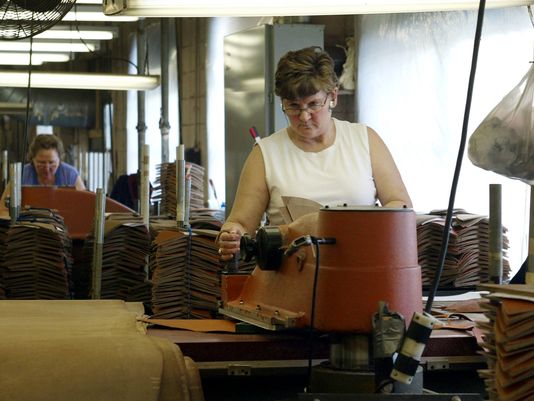Manufacturing Growth Is Fastest In 2½ Years
Manufacturing activity in the U.S. expanded at the fastest pace in 2½ years last month, getting a boost from overseas growth and a strong year for the auto industry.
The manufacturing index at the Institute for Supply Management, a trade group of purchasing managers, rose to 56.4 in October. That’s up from 56.2 in September. A reading above 50 indicates growth.
It was the fifth straight gain for the index. A measure of new orders rose slightly, while a gauge of production fell but remained at a high level. Factories added jobs, though at a slower pace than the previous month.
A measure of export orders jumped to its highest level in nearly a year and a half, a sign of improving economies overseas.
Factories also benefited from a robust U.S. auto industry that is having its best year since the recession began.
Car sales have soared this year and overseas growth in Japan and Europe has picked up a bit.
China’s economy has also picked up after slowing earlier this year. A measure of manufacturing in China, released Friday, showed its best improvement in seven months.
Still, the shutdown slowed activity at companies that make metal products and electrical equipment, according to the ISM survey.
And factories barely increased their output in September, the Federal Reserve said on Monday. Automakers produced more, but that gain was offset by declines at companies that make computers, furniture and appliances.
Companies reduced demand for long-lasting factory goods in September, the Commerce Department said last week. Orders for industrial machinery, electrical equipment and other core capital goods fell 1.1%. August’s orders were revised down to a 0.4% gain, from 1.5%.
Economists pay particular attention to core capital goods, which exclude aircraft and defense-related goods, because they reflect business confidence.
Still, economists don’t expect manufacturing to boost economic growth in the coming months. Growth likely fell to an annual rate of just 1.5% to 2% in the July-September quarter, down from a 2.5% pace in the April-June period. Most economists expect similarly slow growth in the final three months of the year.
Contributing: Associated Press
It was the fifth straight gain for the index. A measure of new orders rose slightly, while a gauge of production fell but remained at a high level. Factories added jobs, though at a slower pace than the previous month.
A measure of export orders jumped to its highest level in nearly a year and a half, a sign of improving economies overseas.
Factories also benefited from a robust U.S. auto industry that is having its best year since the recession began.
Car sales have soared this year and overseas growth in Japan and Europe has picked up a bit.
China’s economy has also picked up after slowing earlier this year. A measure of manufacturing in China, released Friday, showed its best improvement in seven months.
Still, the shutdown slowed activity at companies that make metal products and electrical equipment, according to the ISM survey.
And factories barely increased their output in September, the Federal Reserve said on Monday. Automakers produced more, but that gain was offset by declines at companies that make computers, furniture and appliances.
Companies reduced demand for long-lasting factory goods in September, the Commerce Department said last week. Orders for industrial machinery, electrical equipment and other core capital goods fell 1.1%. August’s orders were revised down to a 0.4% gain, from 1.5%.
Economists pay particular attention to core capital goods, which exclude aircraft and defense-related goods, because they reflect business confidence.
Still, economists don’t expect manufacturing to boost economic growth in the coming months. Growth likely fell to an annual rate of just 1.5% to 2% in the July-September quarter, down from a 2.5% pace in the April-June period. Most economists expect similarly slow growth in the final three months of the year.
Contributing: Associated Press
SOURCE: USA Today



This is very encouraging to ready. I recently graduated from an industrial sewing program that just started in Jan 2013. The program was created by the Makers Coalition, Dunwoody and Lifetrack resources. I am proud to be a part of this movement and to hopefully create jobs for future Makers Coalition graduates.